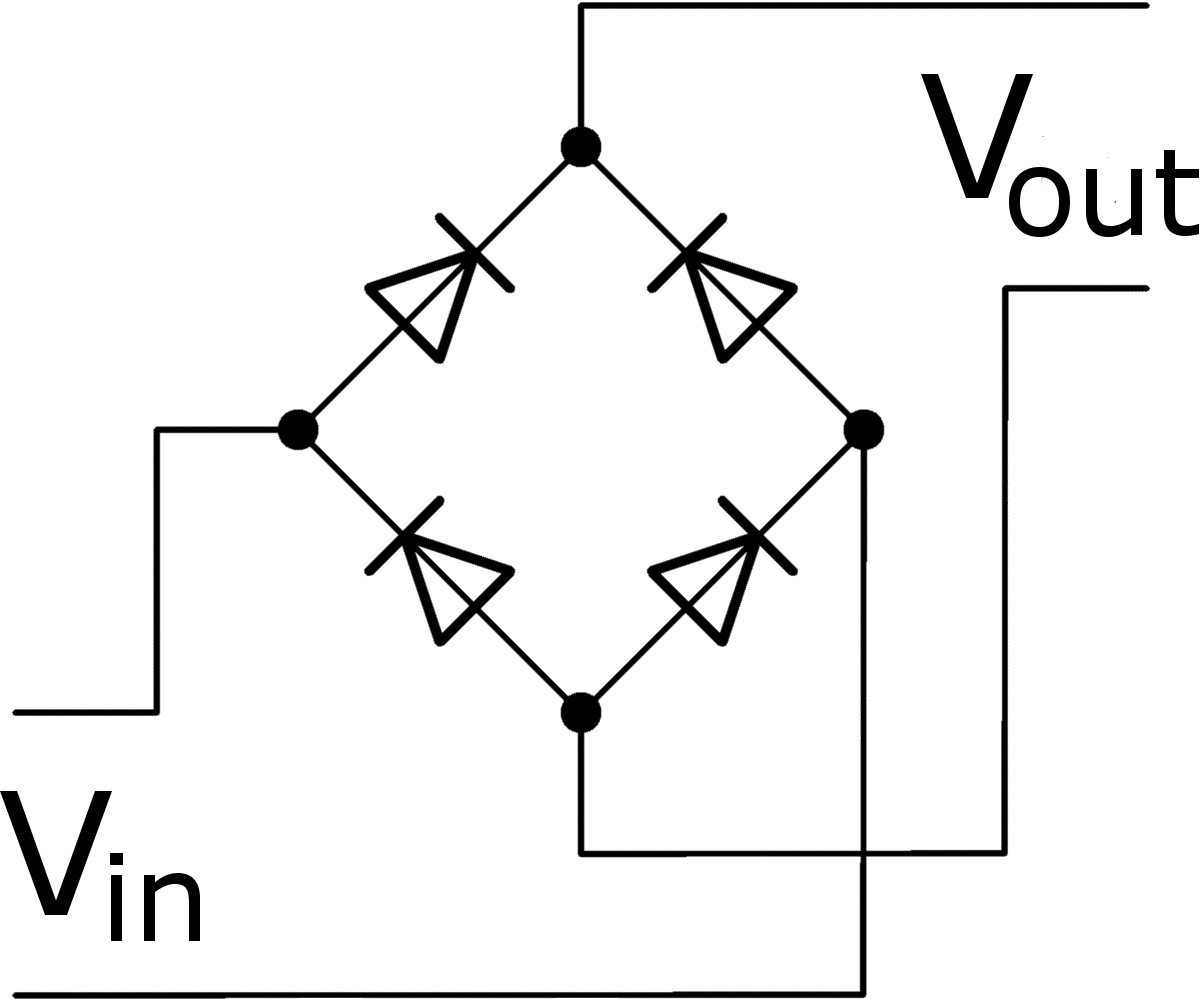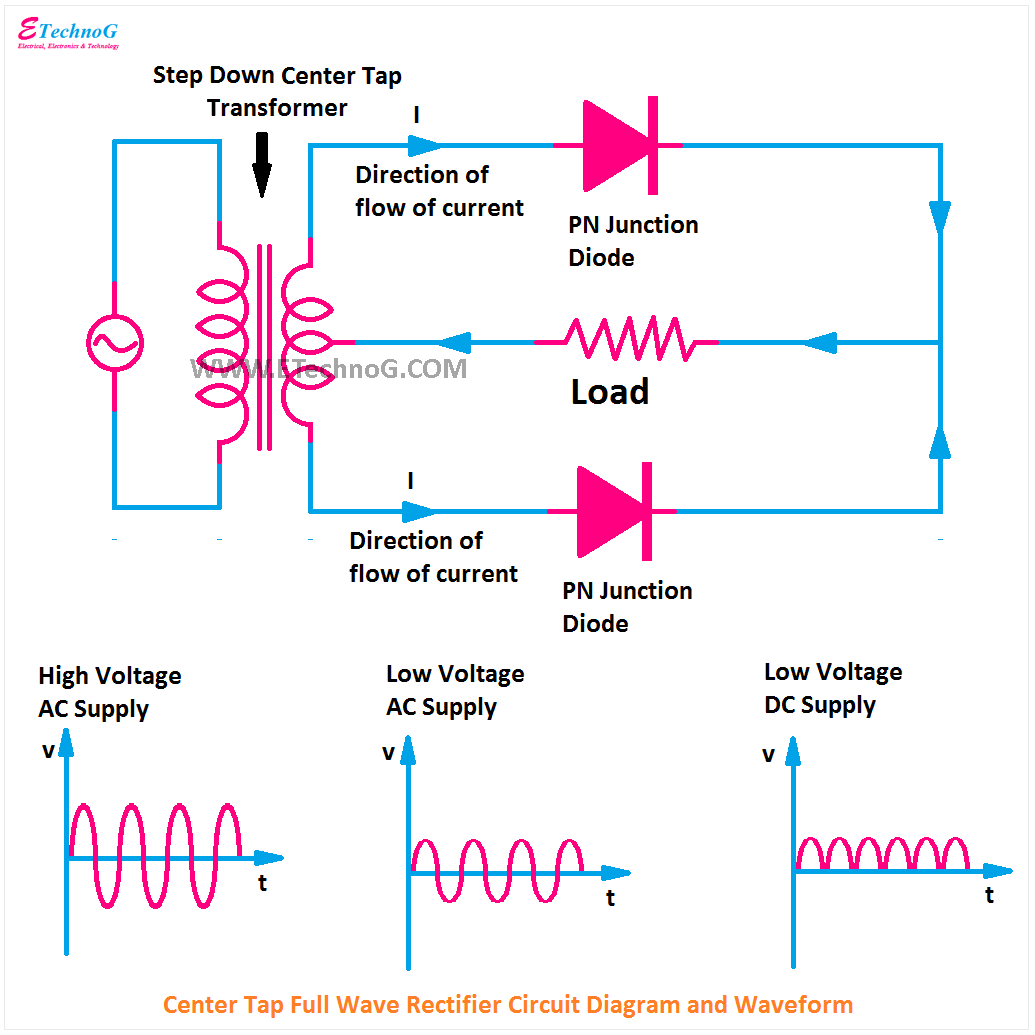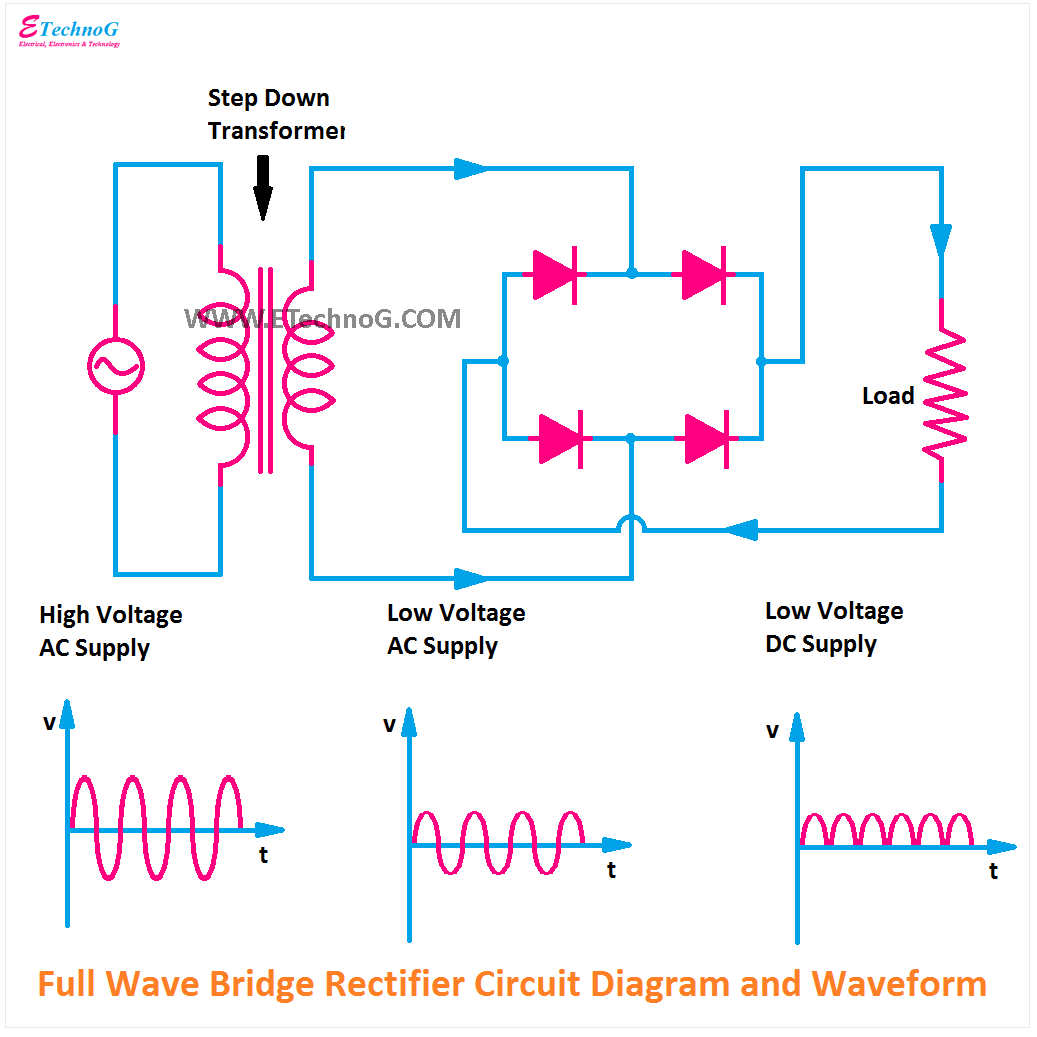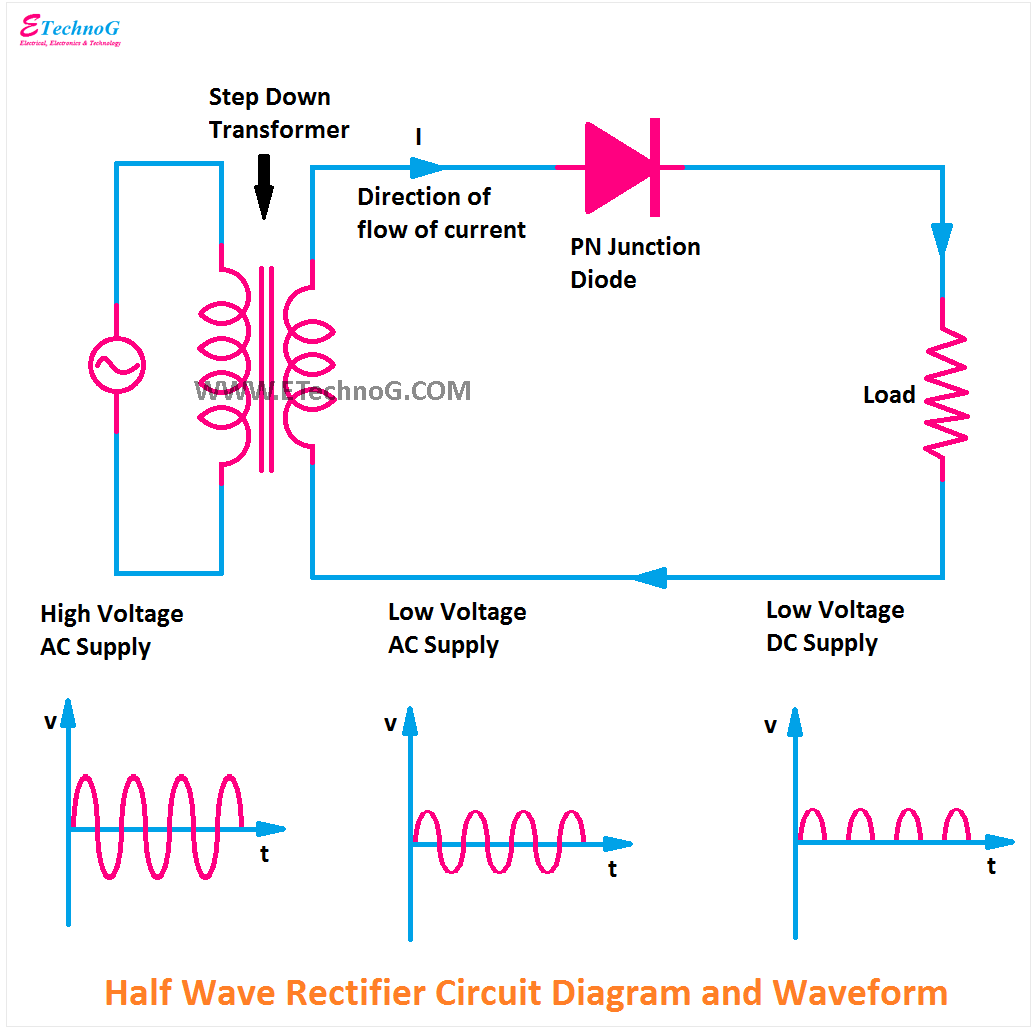Ever wonder how your electronics get the direct current (DC) power they need from the alternating current (AC) power that comes out of your wall socket? A key player in this transformation is the half wave rectifier circuit. This seemingly simple arrangement of components performs the essential function of converting AC to pulsating DC, paving the way for a stable power supply in countless devices.
The process of rectification, converting AC to DC, is fundamental to modern electronics. While various rectifier configurations exist, the half wave rectifier circuit stands out for its simplicity. By allowing current to flow through the circuit during only one half of the AC cycle, it effectively clips off the negative portion (or positive, depending on diode orientation), leaving a pulsating DC output. Understanding the half wave rectifier circuit diagram is the first step to grasping this important electronic concept.
A half wave rectifier circuit diagram typically consists of a single diode and a load resistor. The AC source is connected to the diode's anode, and the cathode is connected to the load resistor. The other end of the load resistor connects back to the AC source. This straightforward configuration is easy to understand and implement, making it a popular choice for basic rectification needs.
The history of rectification traces back to the early days of electricity. With the advent of AC power distribution, the need to convert AC to DC for various applications became apparent. Early rectifiers relied on technologies like electrolytic rectifiers and mercury-arc valves. The development of solid-state diodes revolutionized rectification, enabling the creation of smaller, more efficient, and more reliable circuits, including the now ubiquitous half wave rectifier.
The importance of the half wave rectifier lies in its role as a foundational building block in power supply design. While more complex rectifier circuits, like full wave bridge rectifiers, offer improved performance, the half wave rectifier remains valuable for its simplicity and cost-effectiveness in applications where ripple voltage is not a critical concern. However, understanding the limitations of a half wave rectifier, such as its relatively high ripple voltage and lower efficiency compared to other rectifier types, is crucial for effective circuit design.
A simple example of a half wave rectifier in action is its use in a basic AC to DC adapter. Such adapters might be used for powering low-power DC devices. While more sophisticated power supplies employ more complex rectifier configurations, the half wave rectifier can provide a simple and economical solution for basic rectification needs.
Advantages and Disadvantages of Half Wave Rectifier
| Advantages | Disadvantages |
|---|---|
| Simple Circuitry | High Ripple Voltage |
| Low Cost | Low Efficiency |
| Fewer Components | DC Output is not constant |
Best Practices:
1. Diode Selection: Choose a diode with appropriate voltage and current ratings.
2. Load Resistance: Calculate the appropriate load resistance to achieve the desired output voltage and current.
3. Filtering: Implement a filter capacitor to reduce the ripple voltage in the output.
4. Heat Dissipation: Consider heat dissipation for the diode if operating at higher currents.
5. Safety Precautions: Always ensure proper safety measures when working with AC circuits.
FAQs:
1. What is a half wave rectifier? A circuit that converts AC to pulsating DC by allowing current flow during only one half of the AC cycle.
2. What are the main components? A diode and a load resistor.
3. What is ripple voltage? The fluctuating component of the DC output.
4. Why is a filter capacitor used? To smooth the DC output by reducing ripple voltage.
5. What are the applications of half wave rectifiers? Basic AC to DC adapters, simple battery chargers, etc.
6. What are the limitations? High ripple voltage, low efficiency.
7. What is the difference between a half wave and a full wave rectifier? A full wave rectifier utilizes both halves of the AC cycle, resulting in smoother DC output and higher efficiency.
8. How to design a half wave rectifier circuit? Choose a diode and load resistor based on the desired output voltage and current, and consider adding a filter capacitor to reduce ripple.
In conclusion, the half wave rectifier circuit, despite its simplicity, plays a vital role in electronics by enabling the conversion of AC to DC. Its straightforward circuit diagram, comprised of a single diode and a load resistor, makes it easy to understand and implement. While it has limitations, such as high ripple voltage and lower efficiency compared to more complex rectifier circuits, its simplicity and cost-effectiveness make it a valuable tool for basic rectification needs. From powering simple electronic devices to serving as a foundational building block in more complex power supply designs, the half wave rectifier continues to hold a significant place in the world of electronics. By understanding its principles and applications, we can harness the power of this fundamental circuit to meet diverse electronic needs.
Crafting the perfect tg fall in love caption
Arkansas ebt online application guide
Unlocking serenity the hazy skies paint color trend







